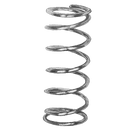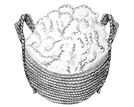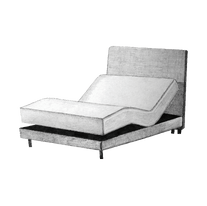It’s fair to say that there is a lot of hype around what’s in a mattress.
It’s quite simple really, once you know what you’re looking for, but retailers will try to confuse you at every turn to give themselves an advantage in their quest for your hard earned dollar.
Firstly, once you get past the marketing terminology that is put there to convince you that the best mattress for you is exclusive to the particular shop you’re in, you will find that, in most cases, the almost identical product can be bought from any number of retailers.
In a minute we will go through the various mattress constructions and their basic advantages and disadvantages.
But before that, let’s begin with you.
Ask yourself a few questions so you know what it is you're looking for!
- What are you looking for in a new mattress?
- Is your current mattress causing you pain, and if so, what sort of pain?
- Has it lost it’s support (worn out)?
- Has it lost its comfort (worn out)?
- Is it no longer the right size (do you need to upsize or down size)?
- Are you experiencing ‘roll together’?
- Are you experiencing ‘partner disturbance’?
- Would you prefer a natural product?
- Would you like an Adjustable bed?
The answers to these questions can help narrow the options, thus making your choices easier to navigate what’s out there.
Mattress Construction
Most mattresses can be viewed as being in two parts, a support system on the bottom and comfort layers on top.
Conventional mattresses have springs as their support system.
The springs can be put together in a number of different configurations.
Support systems
Bonnell Spring
The oldest type of spring is called a Bonnell Spring. It is held together by helical wire spirals (like in a spiral note book). These springs are strong but being interconnected, they are very bouncy. This is a cause of both ‘roll together’ and ‘partner disturbance’.
These springs are inexpensive to produce and so are used mainly in budget mattresses.
There are many variations of Bonnell springs with fancy names such as offset coils etc. but if a spring is joined by helical wires, it will display the above mentioned tendencies towards ‘roll together’ and ‘partner disturbance’.
Continuous Spring
Continuous springs became popular in the 1970’s as they are knitted by a very sophisticated machine from 1 piece of wire and so in fact are even cheaper to produce whilst being able to be marketed as ‘new and improved’. The fact remains that each coil is interconnected to the next by wire and so they still create ‘roll together’ and ‘partner disturbance’, although to a lesser degree.
Pocket Springs
It’s interesting to note that pocket springs have been around for well over 100 years. In terms of cost, a good pocket spring is more expensive to manufacture than the alternatives, but the benefits far outweigh the extra cost.
Pocket spring consist of individual springs which are placed in connected pockets of fabric. This allows the springs to function independently of one another. A bit like pistons.
This construction method offers unrivalled support and means that ‘partner disturbance’ and ‘roll together’ is greatly eliminated.
Another benefit of pocket coils is that they conform much more to the individuals body profile, thus giving superior support whilst alleviating pressure points.
Latex Rubber
Pure Latex Rubber can be and is used as a supportive foundation layer in some mattresses. High quality Latex rubber is expensive and will outlast most springs.
It is a great foundation for mattresses that are being used on adjustable beds, as it can be bent over and over without compromising its integrity.
High density foam
As with Latex, high density foam is an ideal supportive foundation for adjustable beds for the same reasons.
Comfort Layers
The main function of the comfort layers is, as the title suggests, to offer comfort choices that work in conjunction with the support system.
Most comfort layers are multiple layers that work together to create a feel and to offer a benefit. The layers are sandwiched together.
Comfort layers sit directly underneath the quilted ticking (cover) of a mattress.
High density Foam
For the purpose of this blog I will not include low density foams under this heading, as they are cheap to make but offer little to no long term benefit.
High density foams, as the title suggests, have ‘more product therefore less air’ in their construction. High density foams can be produced in a myriad of firmness and so depending on where they are placed in the layers of the comfort system, they can make the mattress feel soft, medium or firm without compromising the life of the mattress.
Gel infused Foam
This is high density foam which has been infused with gel which can help disperse heat.
Memory Foam
Memory foam is a sophisticated visco elastic polyurethane which was invented by NASA and then perfected by TEMPUR. Many companies now use memory foam as one of their comfort layers, as its greatest feature is its ability to relieve pressure.
High Quality memory foam mattresses will outlast and outperform most spring mattresses. Memory foam mattresses are ideal for adjustable beds.
Latex Rubber
As with the use of High quality Latex Rubber in the support system, Latex Rubber has long been used as a comfort layer. It has many beneficial properties including pain relief, hypoallergenic, Eco friendly, breathable and extremely durable. Latex is soft to the touch and yet extremely supportive.
Pure latex mattresses are ideal for adjustable beds.
Wool
Where do I start with the natural properties of Pure NZ wool?
Let’s start by pointing out that wool is natures most wonderful insulator. It keeps you warm and dry in winter and cool and dry in summer.
Wool is soft, durable, naturally safe and has high flame retardant properties. It also has a natural loft.
And in choosing a mattress that features pure NZ wool you are supporting one of our keystone industries.
A word of advice. Just because a mattress claims to have wool in it, this does not mean it's NZ wool or indeed how much wool is in the mattress.
Some companies will infuse thin strands of wool through synthetic fibres just to say that their mattress has wool in it. The same can be said for Alpaca, Cashmere and Silk. Great marketing with little substance. Just ask the question……..how much wool is in this mattress?
Bases
Finally let’s talk about bases.
A mattress needs a base for the fundamental reasons of supporting the mattress, bringing the mattress to a desired height and for ventilation.
Even though I mentioned ventilation last, it is a critical factor, especially in humid climates. A mattress on the floor will act as a wick for any moisture in the air or in the flooring.
Bed Frames
Most bed frames are sold as ready to assemble pieces of furniture as they are too cumbersome to move around ready made.
Because of the RTA nature of most bed frames, they can work themselves loose over time. It is advisable to tighten up the fixings regularly.
Also, if you are storing things under the bed, remember to leave room for ventilation.
Upholstered bases
Upholstered bases are still the most popular units to support your mattress. These are slatted timber frames which are already assembled, screwed, glued and upholstered, usually in a choice of fabrics.
From King size up to Californian King size they come in 2 pieces. Queen size can also be made in 2 pieces for difficult to reach spaces. Upholstered bases usually come on glides for ease of movement on both timber and carpeted floors.
Adjustable bases
Adjustable bases have the basic function of raising your head, your feet or both. There are many ergonomic and health reasons for this, as well as purely indulgent lifestyle reasons.
Adjustable beds can be as simple as you like, or can come with many extra functions such as massage and programmable positions.
Our one strong recommendation, from many years of experience, is do NOT put a spring mattress of any kind onto an adjustable bed. Springs are not designed to bend. Stick to Latex or Memory Foam. Read more on our blog about "Why an Adjustable Bed IS for Everyone."
And so……..
Get out your checklist and see if you can refine your search down to a few most important requirements.
It’s not rocket science but it is a very important purchase, so, take your time, dress comfortably for testing different mattresses, try and shop without distractions and relax...
We are here to help and advise.
Deb and Col









